Physical Address
304 North Cardinal St.
Dorchester Center, MA 02124
Physical Address
304 North Cardinal St.
Dorchester Center, MA 02124
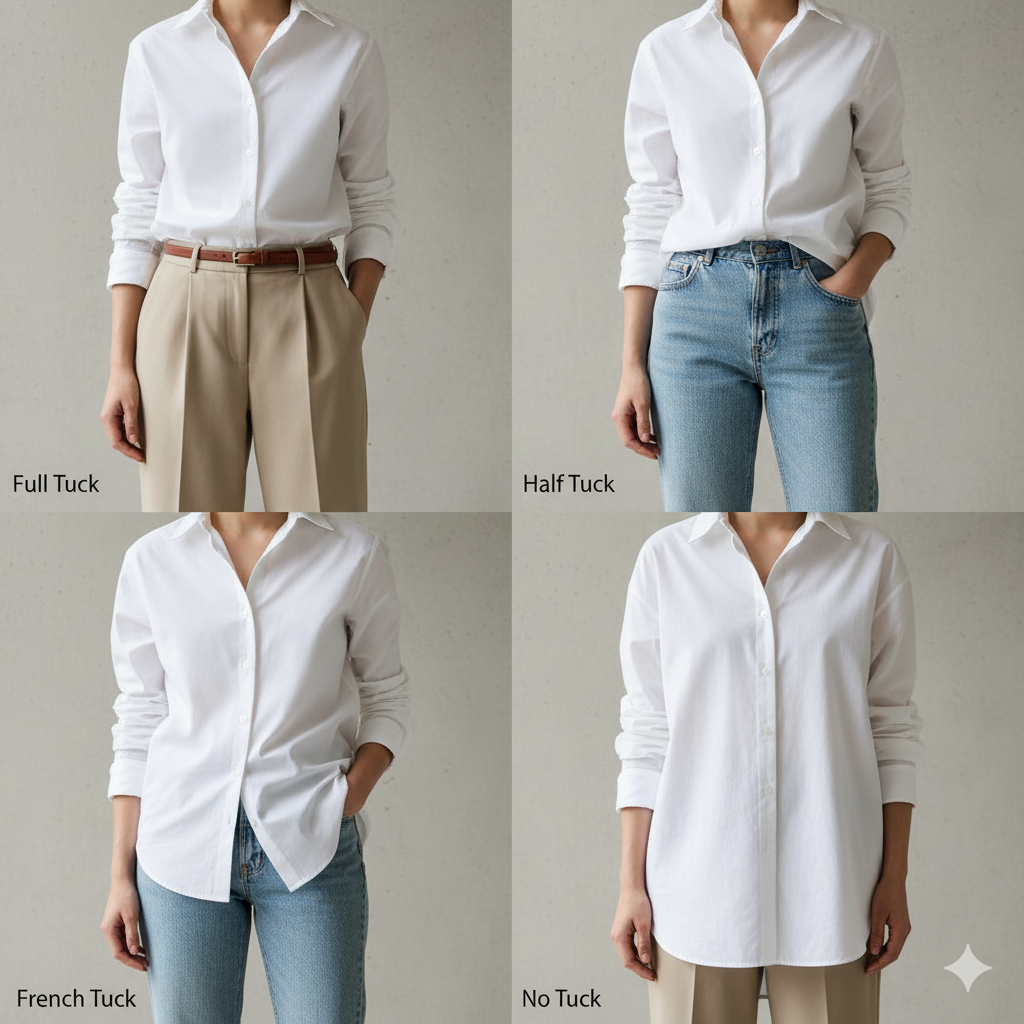
You’re standing in front of the mirror—shirt half in, half out—wondering if it’s a style statement or a fashion crime. We’ve all been there. The question of whether to tuck or not to tuck has followed generations of dressers, from office minimalists to street-style influencers.
In 2025, the answer isn’t one-size-fits-all. Fashion stylists say it’s about balance, proportion, and attitude. Whether you’re chasing that crisp “old money” aesthetic or channeling laid-back downtown cool, the art of tucking can completely change your outfit’s vibe. Let’s break down the stylist-approved rules for mastering the tuck—with confidence and intention.
You might think it’s just about keeping things neat—but tucking has evolved into a language of personal style.
Platforms like TikTok and Instagram Reels have transformed how we interpret the tuck. Just scroll through your feed and you’ll find countless creators demonstrating the “French tuck,” “power tuck,” and “half-messy tuck.” Each one carries its own mood.
The resurgence of the quiet luxury trend—minimalist, structured, and quietly confident—has made clean, tucked silhouettes a wardrobe essential again. Think Sofia Richie Grainge’s neutral ensembles or Zendaya’s tailored red-carpet shirts. According to Vogue, 2025’s minimalist movement celebrates “intentional dressing,” where even the way your shirt falls says something about you.
Let’s decode the tucking trinity every stylist swears by.
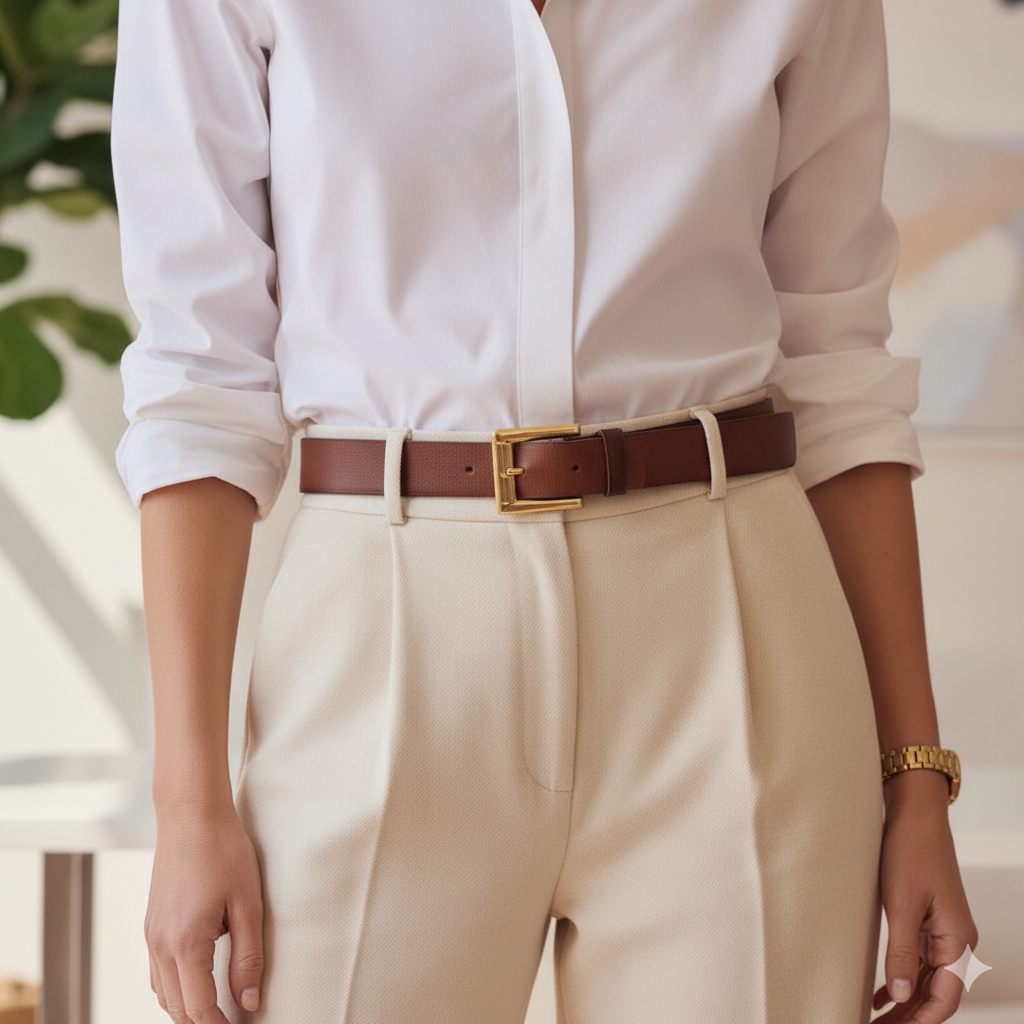
The full tuck is your go-to for professionalism, polish, and poise. It’s perfect for office wear, tailored trousers, or structured denim.
Imagine pairing a crisp white button-down with wide-leg slacks—sleek, powerful, timeless. GQ notes that a proper full tuck “creates the illusion of longer legs and a refined upper body.” The trick? Smooth out extra fabric and secure it with a belt that complements your proportions.
This style also channels the modern “old money” aesthetic—quietly put-together without screaming for attention. It’s a look that never loses relevance.
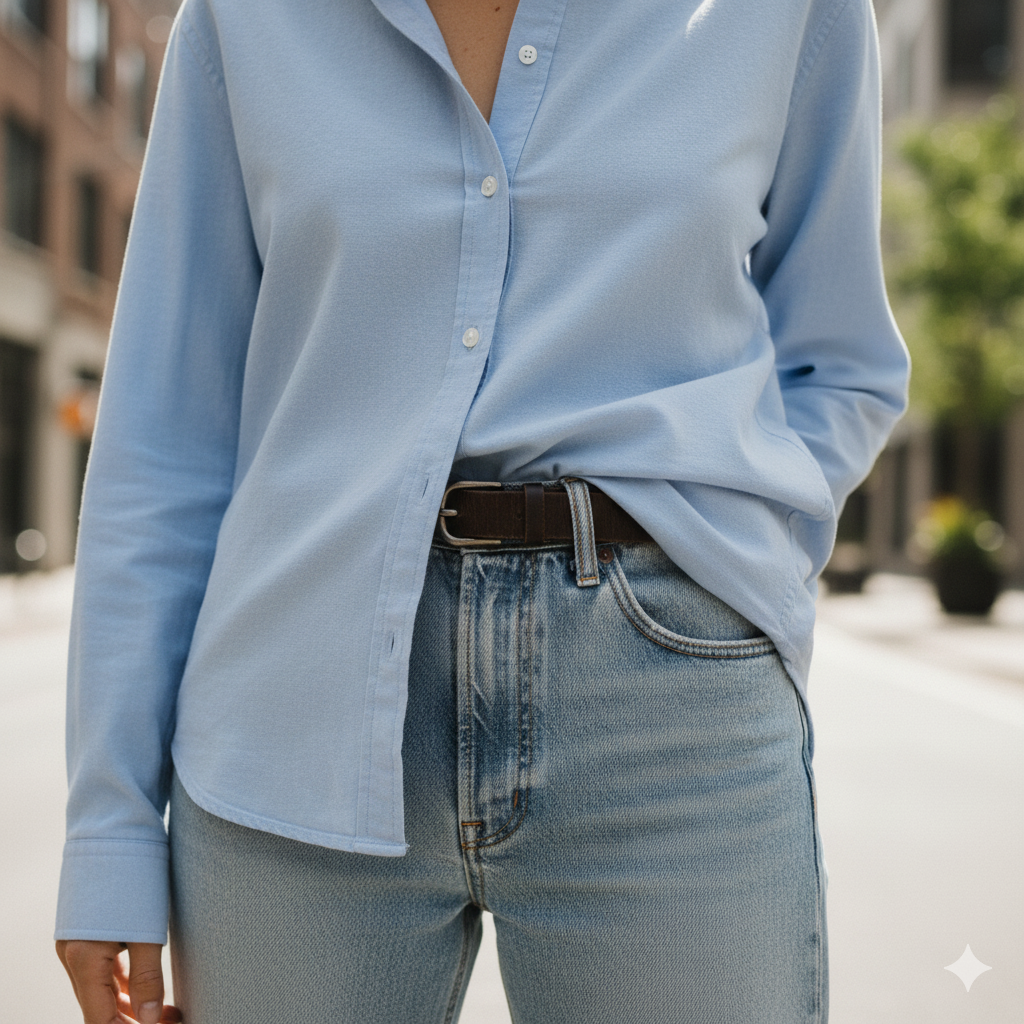
Enter the influencer favorite: the half tuck. Sometimes called the “one-sided tuck,” it’s equal parts casual and chic.
Perfect for weekend brunches or creative workspaces, it adds movement and personality to an outfit. You’ve probably seen it on street-style stars or even creators like Jordan Matter, who capture the vibrancy of modern life in motion.
Fashion editors at Byrdie call the half tuck “a styling trick that adds just enough structure without killing the vibe.” The key is confidence—leave one side relaxed, slightly undone, and make it look intentional.
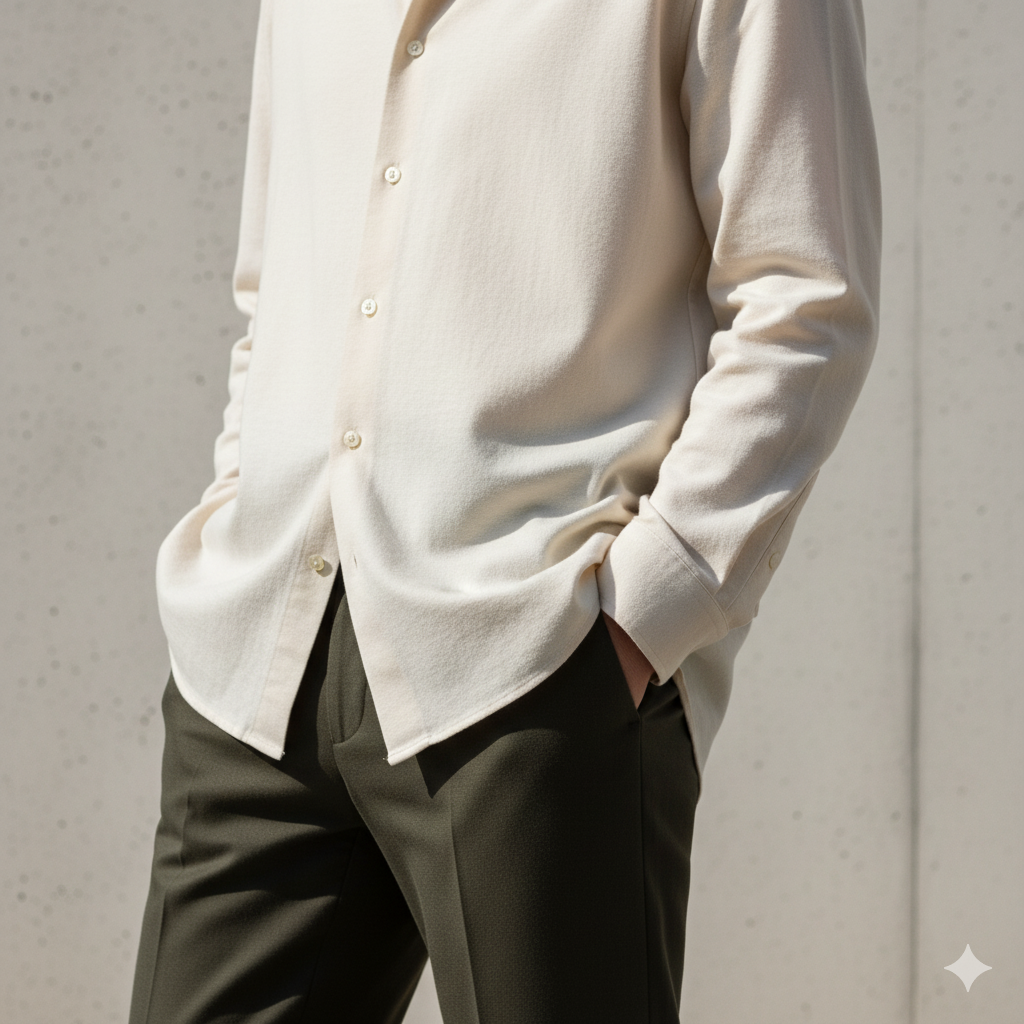
Sometimes, not tucking at all is the boldest move you can make.
Oversized silhouettes, Y2K influences, and gender-neutral fits are rewriting tucking rules. Think Billie Eilish’s boxy streetwear or the comfort-driven wave that celebrates authenticity over perfection.
The no-tuck look thrives when paired with well-fitted pants or shorts—balance is everything. You don’t want to drown in fabric; instead, focus on proportion. It’s also an ideal match for sustainable, breathable pieces like those in our feature on Sustainable Clothing Brands.
Fashion experts agree: there’s no single rule. It’s about context and proportion.
Soft, drapey materials (like silk or linen) fall more naturally when half-tucked, while structured cottons and poplins work best fully tucked. Avoid over-tucking thin fabrics—they can bunch and ruin your silhouette.
For professional environments, stick to a full tuck—it signals neatness and respect. Casual brunch? A half tuck keeps you relaxed but stylish. And for nights out, experiment with asymmetrical tucks to add intrigue.
If you’re dressing for an event, remember the “two-second mirror test”: if it feels forced, it probably looks forced.
Fashion is personal, not prescriptive. Tucking can help define your shape, elongate your legs, or balance your proportions.
If you’re exploring body-positive dressing, take inspiration from stories like Lizzo’s weight loss journey, which emphasizes embracing what feels comfortable—not conforming to a single ideal. A good tuck highlights your favorite features without hiding who you are.
Stylists love to remind us that rules exist to be reimagined.
According to Vogue fashion contributor Sofia de la Cruz, “Tucking is less about etiquette and more about energy. It’s about what story you’re telling that day—polished, playful, or powerful.”
Runway collections from Prada and The Row have showcased tucked and untucked pieces side by side, proving both can feel intentional. The magic lies in posture, fit, and fabric.
As one stylist put it on Byrdie, “If you’re tugging at your shirt all day, it’s not the tuck that’s wrong—it’s the outfit.”
Fashion in 2025 no longer belongs to binary rules.
Men, women, and non-binary creators alike are embracing hybrid fits and experimental tucks. From loose linen shirts on men to tailored, oversized blouses on women, the goal is expression, not conformity.
This shift echoes the broader fashion revolution led by Gen Z influencers and celebrities—people who see clothes as fluid tools of self-expression. Even cultural moments like Salish Matter’s mall shutdown remind us how style has become a shared, universal language.
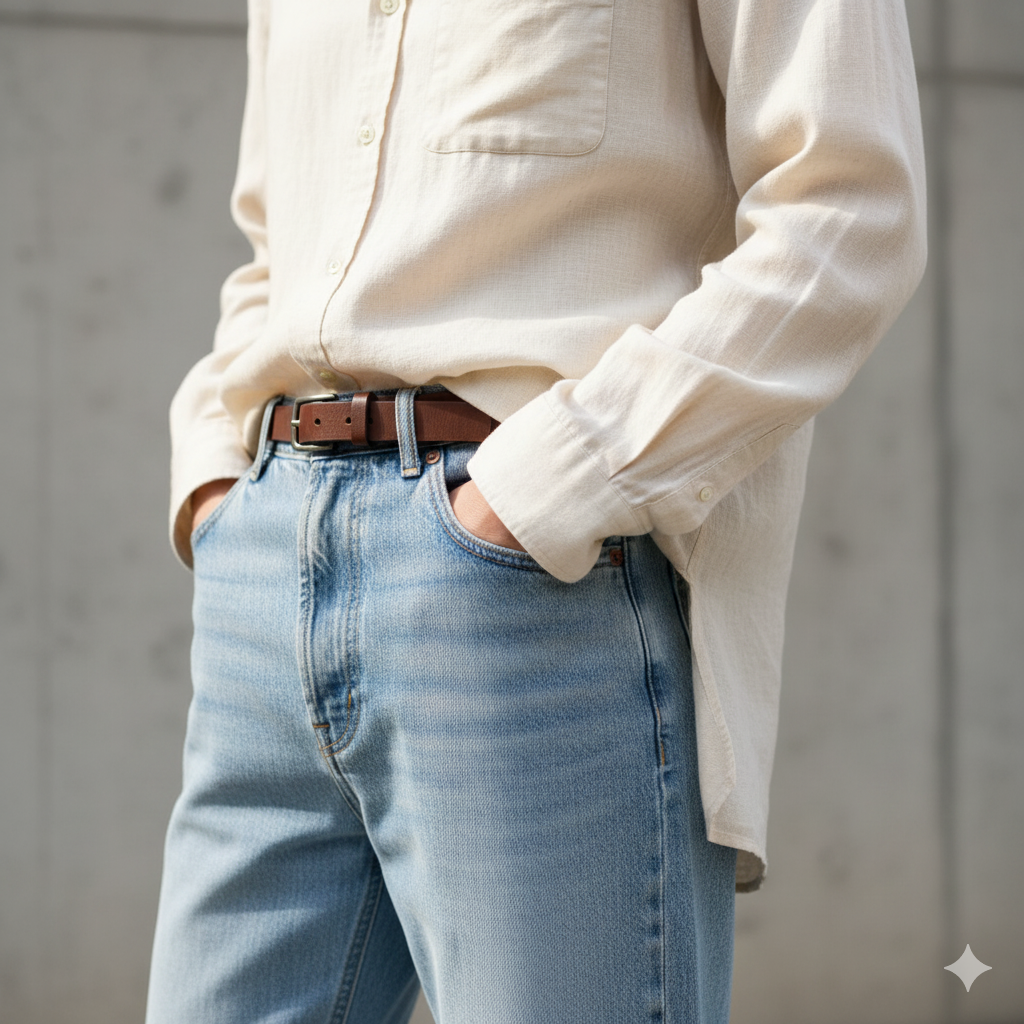
If you’ve ever caught Queer Eye, you know the term “French tuck” by heart.
Coined (and popularized) by Tan France, it’s the gentle art of tucking just the front portion of your shirt, leaving the back loose. It’s flattering on nearly every body shape and gives off effortless confidence.
Why it works: it defines the waist without rigidity, balances volume, and looks amazing with both jeans and skirts. It’s the happy medium for anyone who can’t decide between tidy and carefree.
Even the chicest tucks can flop without finesse.
Here’s what to skip:
And perhaps the biggest faux pas—forcing it. A tuck should feel intentional, not overthought.
| Occasion | Tuck Style | Why It Works |
|---|---|---|
| Business Meeting | Full Tuck | Professional and neat |
| Casual Brunch | Half Tuck | Relaxed yet intentional |
| Date Night | French Tuck | Effortlessly stylish |
| Music Festival | No Tuck | Laid-back, on-trend |
| Evening Event | Structured Full Tuck | Sophisticated appeal |
Pro tip: for all-day comfort, use a lightweight base layer or shirt stay—small tweaks that make a big difference in confidence.
Need proof that tucking is a fashion power move? Just look at how celebrities do it.
Zendaya often pairs a structured half tuck with wide-leg trousers, merging strength and softness. Hailey Bieber leans toward the French tuck for casual cool. And even stars like Harry Styles have redefined “untucked” as a deliberate, gender-fluid statement.
For style inspiration beyond the red carpet, check out how creators featured in our Jordan Matter coverage bring authenticity to fashion moments—they remind us that confidence, not convention, makes an outfit shine.
At the end of the day, there’s no wrong way to wear your shirt if you wear it with conviction.
Fashion is about feeling good in your own skin (and your own fabric). Whether you’re sharply tucked or casually loose, your clothes should say something about you—not the rules you’re following.
The perfect tuck isn’t about perfection—it’s about confidence. So go ahead: experiment, mix, untuck, and re-tuck until you find your version of effortless.
It depends on the jeans’ rise. High-waisted pairs love a full tuck, while relaxed fits benefit from a French or half tuck for balance.
A French tuck only secures the front part of your shirt, keeping the back loose for movement and modern flair.
Generally, yes—it can elongate your frame and define your waistline. But remember, comfort always comes first.
Absolutely. Influencers, stylists, and everyday dressers are keeping the half-tuck alive for its natural, “I woke up like this” energy.
Structured settings call for full tucks, while casual outings invite creativity—try the French tuck or even go untucked for an effortless weekend look.